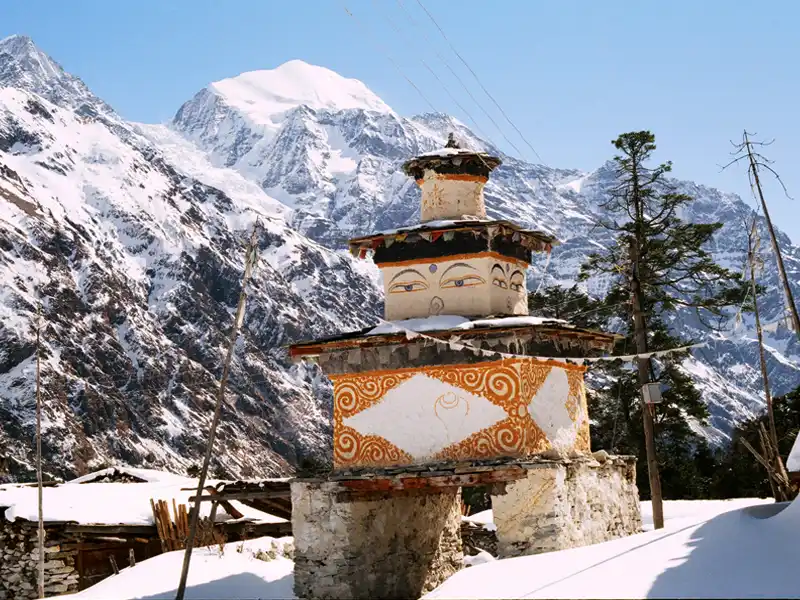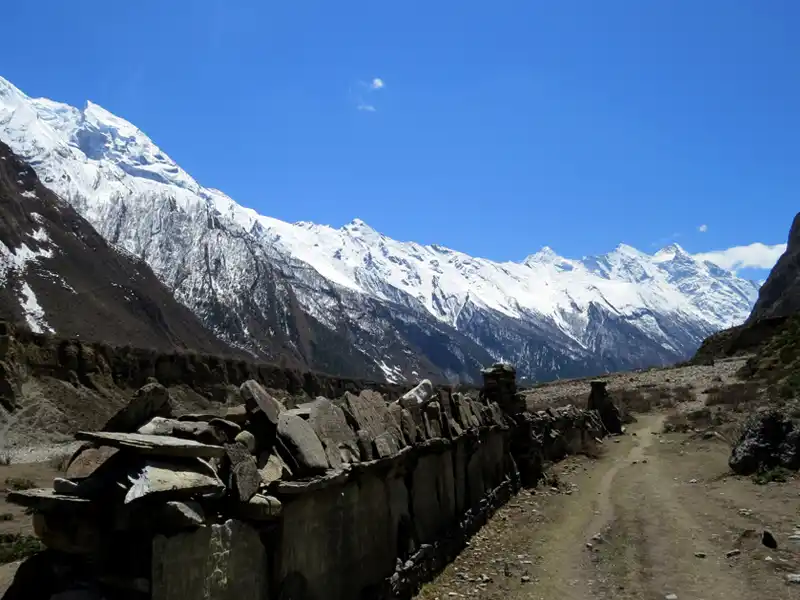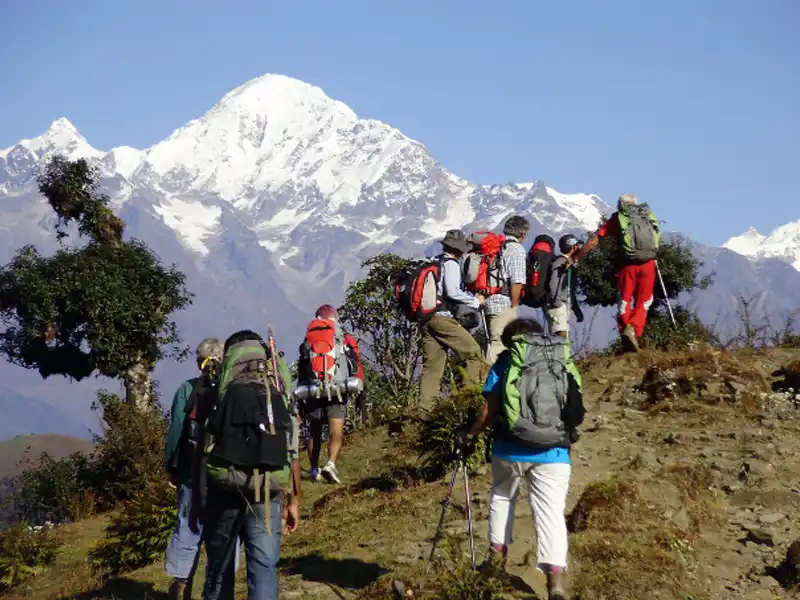Your Tibetan guide, who will be with you throughout your journey, will welcome you at Gonggar Airport. After completing the immigration formalities, you will be driven to Lhasa, which is situated at an altitude of 3,650 meters. It takes approximately 45 minutes to reach the old city from the airport. Once you have checked in at your hotel, it is recommended that you rest and take it easy to allow your body to acclimate to the high altitude of Lhasa. Make sure to drink plenty of fluids to avoid altitude sickness. Please note that there is no program arranged for today, so you have ample time to relax and prepare for the exciting journey ahead. Your guide will be available to answer any questions and provide you with useful information about the trip.
After breakfast, you will receive a briefing on the day's itinerary. An experienced guide will accompany you on a tour to three significant locations in Lhasa: the Sera Monastery, Norbulingka, and Barkhor Square. At the renowned Sera Monastery, you will gain insight into the crucial aspects of Tibetan Buddhism. Next, you will visit Norbulingka, the summer residence of the Dalai Lama, completed in 1956. This splendid building is exquisitely adorned with Tibetan carvings and paintings, offering a visual feast for visitors. The Jokhang Temple will provide another opportunity to appreciate the rich Tibetan cultural heritage. You will also have the chance to take a stroll around the bustling Barkhor Square, the city's nerve center. At the end of the tour, you will be escorted back to your hotel.
Following an early breakfast, your guide will escort you to the magnificent Potala Palace, a dominant structure in the Lhasa landscape. As you are guided through the palace's ancient chambers, you will witness Tibetan art at its finest. The Potala Palace boasts a vast collection of intricate Tibetan murals and stunning statues, and you will also have the opportunity to view the tombs of the eight Dalai Lamas. Later in the day, you will visit the beautifully landscaped Drepung Monastery, where you can observe nuns and monks chanting and performing religious discourses. Please take note that your guide will choose the order of the sightseeing stops because there are only a certain number of visitors permitted at the Potala Palace each day. At the end of the day's tour, you will be escorted back to your hotel for a well-deserved rest.
You will travel along the Friendship Highway and pass by Khamba La at 4,794m. You will make a brief stop to admire the breathtaking views of Yamdrok-Tso Lake and Nazin Kang SA, towering at an impressive 7,252m. Continuing on a westward route, you will encounter another mountain pass, the Karo La, at an altitude of 5,045m. If you glance towards the road, you will see enormous glaciers cascading down towards it. After driving for approximately 261 km, you will reach the town of Gyantse, where you will witness the magnificently landscaped Tibetan villages. Gyantse is renowned for its impressive landmarks, including Gyantse Dzong and Kumbum. Gyantse Dzong is a historical fort built in the 14th century and offers a mesmerizing view of Gyantse and the surrounding Nyang Chu Valley. Kumbum features a large gold-domed stupa and contains several chapels and Tibetan Buddhist murals.
The road from Gyantse to Shigatse spans a distance of around 90 kilometers, winding through breathtaking landscapes of towering mountain passes and picturesque Tibetan villages. As you travel further along the route, the scenery gradually transforms, with each turn revealing new wonders of the natural world. The journey culminates in Shigatse, a vibrant city that stands as a testament to Tibet's rich history and culture. As you enter the city, you will feel a palpable sense of excitement and anticipation, eager to explore its many attractions, including the iconic Tashilhunpo Monastery, one of the largest functioning monasteries in all of Tibet.
Today's journey will take you along the renowned Friendship Highway, offering stunning views of the surrounding picturesque landscapes. You will drive past the small town of Lhatse and traverse the Gyamtso La pass, which sits at an impressive altitude of 5,220m. As the road opens up into the vast plains, you will be able to see numerous monasteries and camps belonging to nomadic herders dotting the landscape. The scenery is nothing short of breathtaking as you make your way to Shegar, taking in the natural beauty and cultural richness of Tibet every step of the way.
In the morning, you will embark on a scenic drive from Xegar to Dza Rongbuk Monastery, a journey that takes you across the stunning Pang La pass. At an altitude of 5,120m, the pass provides sweeping views of some of the world's highest mountains, including Makalu, Lhotse, Cho Oyu, and the mighty Mount Everest. The route mostly consists of dirt roads that wind through breathtaking landscapes, dotted with picturesque Tibetan villages along the way. Despite the rugged terrain, the drive is an unforgettable experience that offers glimpses into the heart and soul of this remarkable region.
Rise early in the morning to witness the majestic sunrise over the peak of Mount Everest, weather permitting, from the comfort of your lodging area. After this breathtaking experience, we will continue our journey toward Saga. Along the way, we will have the opportunity to catch a glimpse of the world's 14th-highest peak, Mount Shishapangma, towering at an impressive 8,012m. We will also stop to admire the beauty of the stunning turquoise Peiku Tso Lake, which sits at an altitude of 4,590m. Keep your eyes peeled, as you may be lucky enough to spot some of the region's unique wildlife, such as wild donkeys or antelopes, in their natural habitat. The journey is sure to be a feast for the senses, with a wealth of natural beauty and cultural treasures to discover along the way.
The journey from Saga to Lake Manasarovar is a picturesque drive along the G219 National Highway, covering a distance of about 450 kilometers. The route takes you through the town of Paryang in Zhongba County and offers stunning views of the surrounding landscape. The road can be completed in a day, but most tours prefer to break the journey into two days, stopping at Paryang for the night on the way. As you approach Lake Manasarovar, you'll be mesmerized by the tranquil turquoise waters of the lake, which is considered sacred in Hinduism, Buddhism, and Jainism. Magnificent snow-capped peaks surround the lake, creating a breathtaking scene that is sure to make an impression.
After reaching Darchen, you can take some rest and prepare for the next day's trek to Mount Kailash. Darchen is the starting point of the Kailash trek, and it is recommended to acclimatize here before starting the trek. You can explore the small town and visit the Darchen Monastery, which is one of the four main monasteries of the Bon religion. In the evening, you can attend a puja (prayer) at the monastery and seek blessings for the trek ahead. Darchen also has basic guesthouses and lodges where you can spend the night before starting the trek the next day.
As we trek from Tarboche, the beauty of the Lha Chu Valley enchants us with its lush green meadows and sparkling streams. The imposing presence of Mount Kailash, the sacred peak of Tibet, looms ahead of us, urging us onward. We follow the meandering river as it winds its way through a narrow canyon flanked by towering cliffs and cascading waterfalls that add to the ethereal atmosphere of the valley. As we continue on our journey, the striking north face of Kailash comes into view, and our hearts fill with a sense of awe and reverence. After several hours of trekking, we reach the ancient Dira-puk Monastery, founded in the 13th century, which marks the end of our first day's journey.
The descent from Drolma La pass to Zutul-puk is relatively easy as the trail flattens out and we walk through rocky terrain with views of the snow-capped peaks in the distance. As we approach Zutul-puk, the landscape transforms into a beautiful green valley with streams and grasslands. Zutul-puk is the site of the famous "Miracle Cave," where Milarepa, the revered Tibetan saint, is said to have meditated and attained enlightenment. The cave contains many ancient murals and statues and is a major pilgrimage site for Buddhists. We spend the night at Zutul-puk and prepare for the final leg of our journey around Mount Kailash.
As we trek, we encounter numerous streams and traverse through an awe-inspiring gorge. The breathtaking views of Kailash continue to accompany us throughout our journey. Afterward, we arrive at the Bharka plain, characterized by desert-like terrain. It takes us approximately an hour to reach Darchen on foot from this point.
The journey from Darchen to Saga is scenic and takes you through diverse landscapes. The first leg of the journey follows the Lha Chu Valley, with stunning views of snow-capped peaks and green pastures dotted with yaks and sheep. As we ascend towards the Mayum La Pass, the landscape transforms into rugged and rocky terrain. From the pass, we descend into the vast Paryang plain, a high-altitude desert stretching as far as the eye can see. The journey’s final stretch takes us along the Brahmaputra River, with occasional sightings of nomadic herdsmen and their flocks. Overall, the journey from Darchen to Saga is a remarkable experience that offers a glimpse into Tibet's natural beauty and cultural richness. The drive from Darchen to Saga takes approximately 8–9 hours, covering a distance of around 450 kilometers. Along the way, you can stop at various points of interest, such as the ancient Chiu Monastery and the hot springs of Hor Qu.
The journey from Saga to Kyirong is a picturesque drive that takes us through some of the most scenic landscapes in Tibet. We start our day by crossing the Brahmaputra River and driving through the green pastures of Peiku Tso Lake. As we continue our journey, we pass through small Tibetan villages and cross several mountain passes, including the Saga La pass, which offers stunning views of the Himalayan range. Along the way, we can witness the traditional lifestyle of the Tibetan people and learn about their unique customs and beliefs. After several hours of driving, we will arrive at Kyirong, a small town located near the Nepal border.
The journey from Kyirong to Kathmandu is an incredible adventure that takes us through some of the most beautiful landscapes in the Himalayas. As we cross the border into Nepal, we continue our journey along the Trishuli River, a lifeline for the Nepalese people that provides stunning views of the Himalayan foothills. Along the way, we pass through charming villages and towns, where we can immerse ourselves in the local culture and witness the traditional way of life of the Nepalese people. After several hours of driving, we finally arrive in Kathmandu, a city that is steeped in history and culture.
The Tibet Lhasa Kailash Tour cost on the website applies to 6–12 people. However, private trips for groups of two or more can be organized upon request. A group booking of 12 or more people can avail of a maximum discount. Clients' travel date preferences can be accommodated, but the trek cost depends on factors such as group size, duration, accommodation type, and additional activities or services.
- Group Size: The cost of the trip will depend on the size of the group.
- Hotel Accommodation Category and Client's Budget: The cost may also vary based on the accommodation category and budget preference of the client.
- Itinerary Modification: Our trekking itinerary can be modified according to your time and requirements, and the cost will be adjusted accordingly.
- Additional Services: If you require additional services, the cost will be adjusted accordingly based on mutual understanding.
| Trip Dates | Trip Cost | Status | Inquiry |
| USD | Available | Inquiry |
Cost Includes:
- Airport pick-up drop on a private vehicle.
- 3 nights hotel accommodation in Lhasa at twin sharing on BB plan.
- All necessary Tibet travel permits.
- Private vehicles (van or Jeep or bus) for a tour.
- Best available Guesthouse or lodge accommodation in Tibet on twin sharing basis with breakfast.
- Kailash admission fee and Grass dame charge.
- English-speaking, trained, and experienced Tibetan guide.
- All fees for sightseeing and visits to monasteries as outlined in the itinerary.
- Yak and Yakman to carry baggage, food, fuel, etc. while making rounds of Mt. Kailash.
- All applicable taxes and service charges.
Cost Excludes:
- Lunch and dinner in Lhasa.
- Chinese Visa fee.
- Air tickets (Kathmandu to Lhasa).
- Personal insurance such as travel, accident, medical, emergency evacuation, and lost luggage.
- Expenses of personal nature such as aerated drinks, beverages, laundry, postage, telephone, etc.
- Tips and bonuses.
- If extra help like Yaks, horses, and porters is necessary for some clients, the local guide will help to arrange but clients have to decide the day before the trekking.
Please feel free for any queries.
Q: What is the Lhasa Kailash Tour?
A: The Lhasa Kailash Tour is a pilgrimage and sightseeing tour that takes you to some of the most sacred and spectacular sites in Tibet. It includes visits to the holy Mount Kailash, Lake Manasarovar, the ancient city of Lhasa, and other important cultural and natural landmarks in the region.
Q: What is the best time to take the Lhasa Kailash Tour?
A: The best time to take the Lhasa Kailash Tour is from May to October, as this is the period when the weather is most favorable for travel in Tibet. The summer months offer clear skies, pleasant temperatures, and stunning natural scenery.
Q: How long does the Lhasa Kailash Tour take?
A: The Lhasa Kailash Tour typically takes around 15-20 days, depending on the specific itinerary and the duration of your stay at each destination. This allows you to fully immerse yourself in the local culture and experience all the highlights of the tour.
Q: What is the level of difficulty of the Lhasa Kailash Tour?
A: The Lhasa Kailash Tour can be physically challenging due to the high altitude and the need for trekking at Mount Kailash. It is important to be in good health and fitness before embarking on the tour and to acclimatize properly to the altitude.
Q: What is the accommodation like on the Lhasa Kailash Tour?
A: The accommodation on the Lhasa Kailash Tour varies from basic guesthouses and tents to more comfortable hotels in Lhasa and other cities. The facilities and amenities may be more limited in remote areas, but the hospitality and warmth of the local people more than make up for it.
Q: What permits are required for the Lhasa Kailash Tour?
A: The Lhasa Kailash Tour requires several permits, including the Tibet Travel Permit, the Aliens' Travel Permit, and the Mount Kailash Trekking Permit. These permits must be obtained through a registered tour operator, and it is important to allow enough time for the application process.
Q: What is the cost of the Lhasa Kailash Tour?
A: The cost of the Lhasa Kailash Tour varies depending on the specific itinerary, the duration of the tour, and the level of accommodation and services provided. It is best to consult with a registered tour operator for a detailed quote and to discuss your specific requirements.
Q: Is the Lhasa Kailash Tour safe?
A: The Lhasa Kailash Tour is generally safe, provided that you follow the advice of your tour guide and take the necessary precautions to ensure your health and safety. It is important to be aware of the risks associated with high altitude and to acclimatize properly before undertaking any physical activity.
 Lhasa Mansarovar Kailash Tour
Lhasa Mansarovar Kailash Tour Most Popular
Most Popular 


